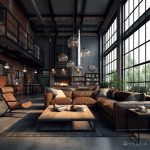Have you ever thought about who the mastermind behind the designs of those nice rides you admire, your toys, and home appliances is?
In case you didn’t know, behind every nice-looking ride and beautiful home appliance is the creative act of an industrial designer who combined art and engineering to manufacture products that people use every day.
Follow along as we dive fully into industrial design as a course in Nigeria.
Table of Contents
Concept of Industrial Design
Industrial design is the application of art to manufacturing physical products that people use every day. It teaches students how to apply the principles of the theoretical concept of materials and processes coupled with the practical application of designs and patterns.
Industrial design is a field that focuses on the utilization of the principles of design and engineering to create products that look good and function effectively. It aims to improve the concept of manufacturing products such as cars, toys, and home appliances.
Furthermore, it is the application of the principles of art, business, and engineering to make products that will make human day-to-day activities more comfortable.
Read also: Getting Started as a Product Designer in Nigeria: All You Need to Know.
Who is an Industrial Designer?
An industrial engineer is one with a deep knowledge of industrial design courses, industrial design art, and how they can be properly applied to create a perfect product. He/she industrial designer has a bachelor’s degree in Industrial design and is well knowledgeable in the aspects of Mathematics, Science, Arts, and Social sciences and how to apply them in manufacturing products.
How to become an Industrial Designer in Nigeria
- Acquire a degree in relevant fields
To become a successful industrial designer, you must meet the basic requirement for most entry-level designer jobs, which is acquiring a bachelor’s degree in industrial design. Though in some cases, a degree in engineering or architecture would suffice.
To increase your chances of becoming a successful industrial designer, you would need four years to acquire a bachelor’s degree and two years to earn an associate degree.
-
Acquire needed skills
As an industrial designer, it is also advisable to engage in certain skills such as; Woodwork, Metalwork, Sketching, Sculpting etc.
-
Develop your portfolio
Developing a portfolio (collection of your best works) as a designer helps showcase your talents and impress investors, clients, or employers.
-
Apply for jobs
The next thing is to begin to apply for jobs.
What do you think about being a part of a community of young professionals in different fields? Amazing, right? Join us here.
Industrial Design Courses
You must study certain courses to enable you to become a successful Industrial designer and prepare you for job opportunities around the world. They are:
-
Ergonomic assessment
Ergonomics in industrial design is a discipline that centers on designing products that are efficient, comfortable, and safe for humans to use. It is a science that designs products based on how humans relate to systems or equipment that they use or come in contact with.
An example of industrial ergonomic equipment is an electric hydraulic positioner etc. After which the effectiveness of such products is tested by conducting usability tests, collecting feedback and reviews, and performing ergonomic assessments and audits.
In Ergonomics, principles of physiology and psychology are applied to improve interactions between humans and their environment.
-
Interaction design
Interaction design is a science in which human-to-computer interfaces (HCI) are made to feel human-like. It is the creation of a dialogue between a human and a system or product. Interactive digital products create a human connection through physical and emotional dialogue manifested in the interplay between function and technology as experienced over time.
Interactive design can be applied in five dimensions: words, visuals, representations, time, physical objects, and behavior, to create meaningful interactions between humans and services.
Interaction design exists in five forms, They are:
- Anthropomorphic form: Anthropomorphism in interaction design is the process of designing a user interface to possess human-like characteristics. In Anthropomorphism, meanings and instructions are expressed using human-like terms.
- Cognitive approach: Cognition refers to what goes on in the human mind while carrying out day-to-day activities. The cognitive approach in interaction design is the consideration of the abilities of the human brain and sense organs and its application in the development of an effective human-computer interface.
- Predictive modeling approach: Predictive modeling is an approach to interactive design. It is used to predict future behavior and outcomes by applying statistical techniques. The predictive approach utilizes certain techniques such as neural networks, regression, and decision trees to design, process, and validate a device that can be used to make future predictions.
- Empirical approach: The use of empirical approach in human-computer interface is for comparison and examination of multiple conceptual designs which can be done by counterbalancing and running usability tests on each design
-
2D sketching
2D sketching is a conventional and must-use method for communicating a project. A 2D sketch accurately describes the design intent and its requirements. It helps to visualize the size, shape, features, characteristics, and finishing of all materials. It also aids in preventing design errors before taking the design into the 3D modeling software for completion.
In the process of industrial sketching, there are four main rules to be followed:
- Draw light for your construction lines.
- Draw loosely without looking for perfection.
- Draw from general to details, starting with the main body, then proceed to the buttons, handles, logos, and stickers.
- Always visualize your perspective.
-
Computer-aided design (CAD)
Drawing computer-aided design (CAD) is a way of digitally creating 2D drawings and 3D models of real products before they are produced. The CAD software enables designers to correct errors, prevent costly mistakes, and easily review and modify designs.
Using CAD tools like Onshape, designers can trim and sculpt perfect products. CAD can be applied in Mapping, Architecture, the Dental industry, and the Automotive sector.
-
Sustainability in design
Sustainability in design is also known as environmental consciousness in design or eco-design. It is a design strategy that focuses on meeting the needs of the present while conserving resources for future use. Sustainability in design aims to reduce negative impacts on health conditions, well-being of occupants, and the environment at large, thereby improving building performance.
The basic objective of sustainability in design is to create products and provide services that minimize waste and create a healthy and productive environment.
-
Prototyping
Industrial prototyping is an essential aspect of a machine or product design phase. it is a bridge between the stage of initial concept design and the product stage of manufacturing. It is an experimental process where designers implement tangible ideas from paper to digital.
Prototyping aids rapid detection of product errors, allowing designers to handle and examine the product in its final designing stage. It enables designers to test the usability of a design, its efficiency, and the viability of a product.
Read also: Full Guide on How to Design AI Marketing Strategy.
Industrial Design Art
Industrial design art is an application of art that focuses on utilizing aesthetics and end-user consideration to provide solutions for problems of function, brand development, physical ergonomics, sales, and sustainability.
The main principles of industrial design art are:
-
Functionality
This principle requires a deep knowledge and understanding of end-user preferences and behavior. It involves designing easy-to-use products that would meet the needs and requirements of end users in a practical way. Application of functionality in industrial design art requires the ability to anticipate future trends in the industry.
-
Simplicity
Simplicity in art is the practice of creating what is necessary within a work of art. Simplicity in industrial design is a principle that suggests that all unnecessary elements from designs and all designs should be made as simple as possible without sacrificing usability or functionality, in order to create a smooth user interface.
-
Aesthetics
This is a core design principle that involves the combination of the beauty of raw materials and the utilization of the functionality of everyday objects. Aesthetics help to define the pleasing qualities of a design; industrial designers use aesthetics to complement the usability of their designs through the use of attractive layouts.
-
Innovation
Innovation in industrial design involves the application of humanly generated ideas into manufacturing and developing technologically feasible, humanly desirable, financially viable and efficient products.
How Much Does an Industrial Designer Earn in Nigeria?
An industrial designer in Nigeria can earn between 1,069,900 NGN and 3,696,900 NGN on average. Monthly salaries for industrial designers in Nigeria range from 89,000 to 308,000 per month, depending on your experience and mastery in leadership as an industrial designer.
Read also: Freelance Graphic Design: Roadmap to Becoming a Professional Graphic Design.
Conclusion
Becoming an industrial designer may look easy, but it’s not! Industrial design requires focus and actual interest in the field. Before diving into the field of Industrial design, make sure you are good in calculations, sciences, technical drawing, and other skills you require to become the best industrial designer you can be and to prepare you for job opportunities from any part of the world.
Subscribe to our newsletter to receive notifications of our latest posts dropped right in your inbox.
Edited by Oluwanifemi Akintomide.
About Author
-
Obafaiye Precious is a content writer by skill. I love to articulate ideas, thoughts and memories into words, and am a deep lover of poetry. I'm Nigerian by birth, I love to write about my country and Africa at large!
I hope to become one of the best professional content writers.
So help me God!
Latest entries
 WomenApril 19, 2024Heart Attack in Women: Meaning, Causes, Symptoms and Prevention
WomenApril 19, 2024Heart Attack in Women: Meaning, Causes, Symptoms and Prevention
 CareerFebruary 6, 2024Industrial Design as a Course in Nigeria: The Hidden Treasures
CareerFebruary 6, 2024Industrial Design as a Course in Nigeria: The Hidden Treasures TechnologyJanuary 7, 2024A Beginner’s Guide to Quantum Computing
TechnologyJanuary 7, 2024A Beginner’s Guide to Quantum Computing


2 comments
This is very detailed. Well done!
Thank you.